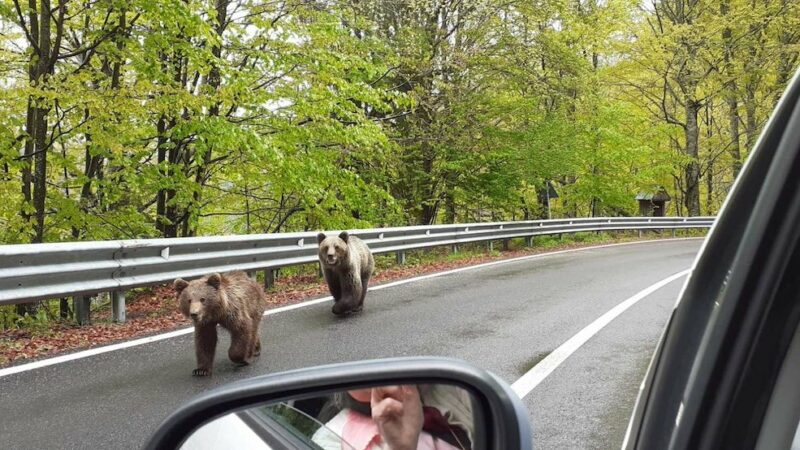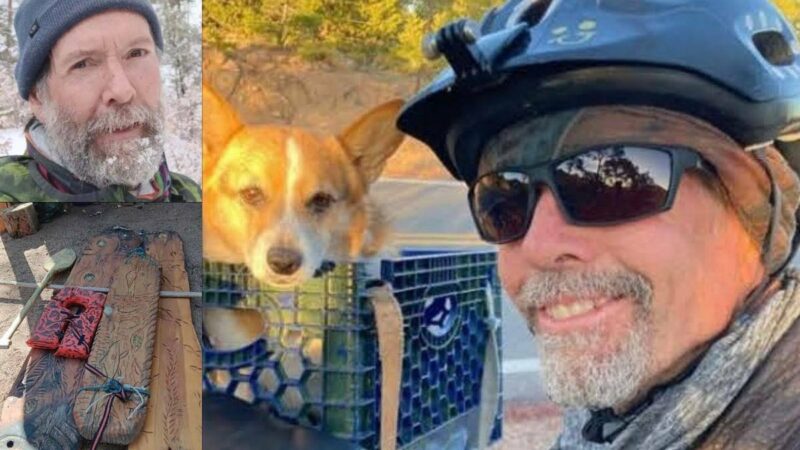James Glancy: My Life Diving with Sharks
They say kids love sharks and dinosaurs. Well even though I now consider myself a filmmaker and conservationist who focuses on investigating international wildlife crime and conflicts, one of my lifelong passions has been diving and swimming with sharks.
I’ve been into them since I was 13.
It all started when I was on holiday with my parents back in 1994. We were in Key West, in Florida, and we went out with Southpoint Divers. The day we went out, the water was rough. Instructors said it was too rough for a kid. I told them, if the fat guy on the boat with us can do it, so can I. So I did. There were bull sharks in the water. It was scary and exciting, and it got me hooked. When I got home, I bought two shark books and learned every shark fact there was at the time. Later, after I finished a 10-year career with the Royal Marines, I got back into shark diving and started pitching documentaries.
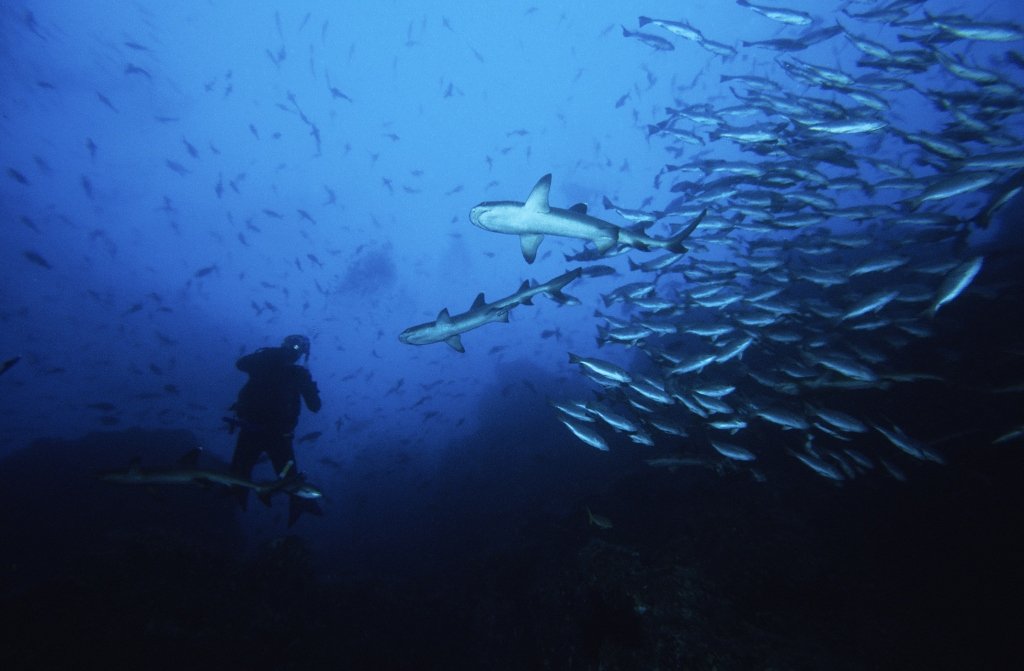
I’ve had some incredible experiences diving with sharks. I’ve been on more than 500 dives since then.
Epic dives
Some of the dives have been particularly memorable. When I dived in the Great Barrier Reef in 2004, we had 50 sharks around us. Off the coast of Jupiter, in Florida, I did a show for National Geographic during which I set out to find the world’s biggest bull shark. At one point during filming for that, I had 30 bull sharks around me, a huge shiver.
Another time, in the Bahamas, I was off Cat Island and found myself smack in the middle of 12 oceanic whitetips. Those are the sharks people think ate many the sailors off the U.S.S. Indianapolis shipwreck in 1945. [Once the ship sank, only 316 of the 1,196 men on board survived.] I was there doing an experiment of sorts, filming a show for Discovery about how sharks respond to shipwreck survivors. They put me and another diver in the water for two days with these sharks. Basically, we were decoy shipwreck survivors. We got tired. it was hot. We had this barrier around us, it was netting though and not a cage. But if we didn’t have that net, we probably would have been eaten alive.
Recently I was in the Maldives for a shark dive. It was very challenging. Visibility was terrible. There were bull sharks all around. I much prefer diving with sharks in daylight hours and clear water; if you can see where they are and they can see that you can see them, that’s the safest way to do it. The worst thing to do with any predator but particularly sharks is to not be aware of where they are. That can happen easily around a river mouth or by diving at dusk or nighttime. If you’re doing night diving, you want lots of lights and lots of eyes looking out for you. Even then, you must stay alert.
Debunking misconceptions
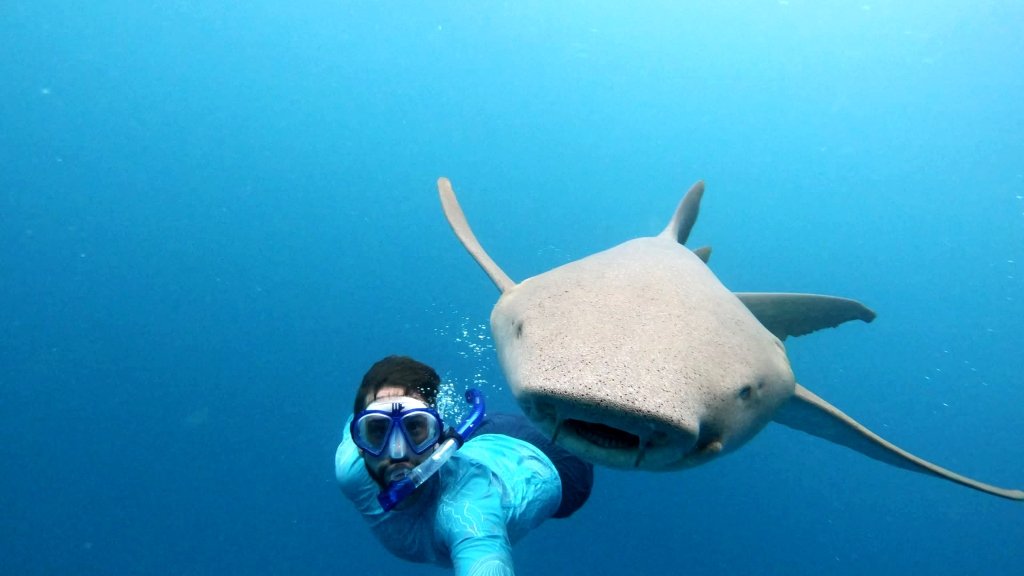
It pains me that so many people think sharks are bad. There’s more of an intelligence with these animals than we often depict in the movies. Crazy films since “Jaws” have made the species seem like one big killing machine. When you spend time diving with them you see there’s way more complexity to this highly evolved predator that has been around for hundreds of millions of years. A social hierarchy. A familiarity between them. I’m sure there’s also more physical communication between them than we understand. We are just starting to see how much they communicate. At the same time there aren’t that many left because we’re killing them.
Today, most of the films I make are conservation focused. My current film is about the last great white sharks in Mediterranean that may go extinct in our lifetime. I’ve been on this project for more than a year. I feel passionate about making films about the extinction crisis that’s facing a lot of animals, particularly marine life. My goal is to highlight those issues and find out if it is possible to save some of these animals from extinction.
Taking action
You don’t have to be a professional to dive with sharks—there a number of places where you can do it as a beginner like I did when I was a kid. The Florida Keys are one such place, the Bahamas is another. Both serve up some amazing shark action. If you go, it helps to be PADI certified. You can even look into taking a class while you’re there.
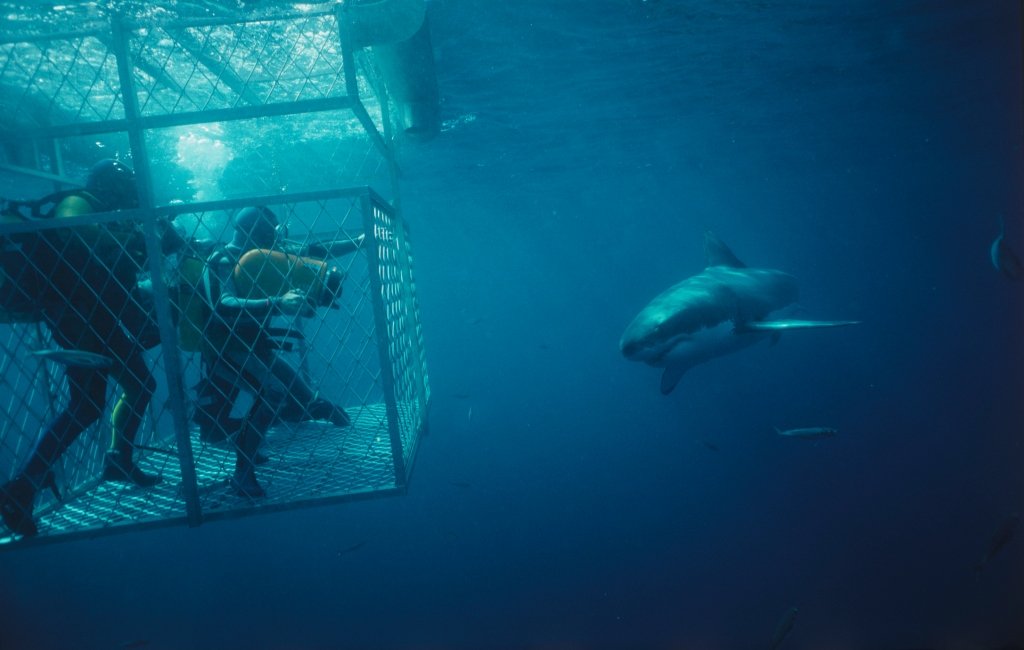
Getting involved with conservation is an easier route. All you must do is show up! The first step is watching some of my films. You can keep up to date on my conservation projects by following my social media accounts and by subscribing to my YouTube channel. Also, Discovery channel and National Geographic have my films on their on-demand platforms. That’s when you really change people’s minds.
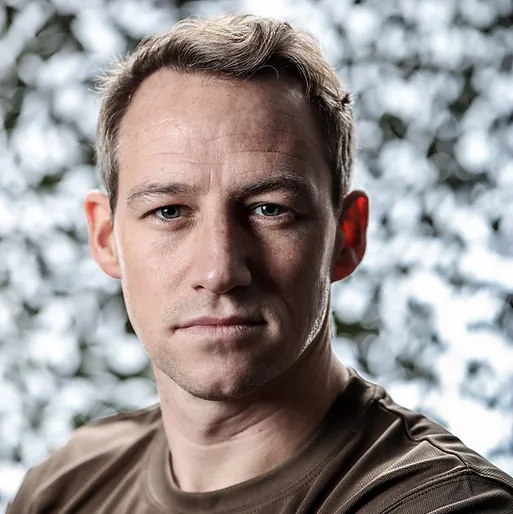
James Glancy, 40, is a British filmmaker and conservationist who focuses on investigating international wildlife crime and conflicts. He recently directed his first feature documentary, titled “Afghanistan,” about the collapse of the country in 2021. James has hosted films on National Geographic and the Discovery Channel. His wildlife investigations have filmed illegal and unregulated fishing activity in the Mediterranean, activism on board with Sea Shepherd in the South Atlantic, and the illegal wildlife trade across Africa and Asia. James also served for 10 years in the Royal Marines.
Source: https://outdoors.com/epic-adventure-my-life-diving-with-sharks/




